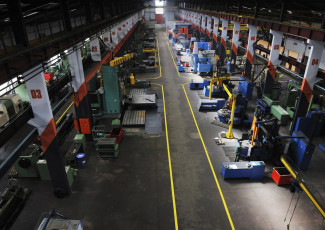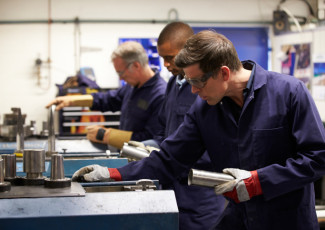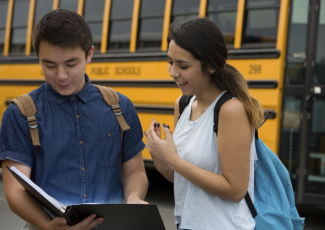Building a Bridge Between High School and College
By Sonya Stinson
June 27, 2014
Two early college programs find success by establishing connections with local secondary schools.
The ultimate goal is to get students to graduate. But first, administrators have to get them to enroll.
That’s why it’s important for community college leaders to work with high school faculty — and to do it on their turf, says Mary Aycock, academy development manager of the central region for the National Academy Foundation (NAF) and former director of Early College Health Science Academy at the Butler Community College (BCC) in Rose Hill, Kan.
“To build a relationship, you have to go to them,” says Aycock, who is known for showing up for informal chats with local high school leaders with lunch in hand. “They’re not going to just show up on your doorstep,” she says of the relationships she’s built at BCC.
Success story
So far, her approach has worked. After producing just a single graduate from its Early College academy in 2011, BCC is in line to confer 22 general studies associate degrees to participating high school seniors by next spring.
“Although early college programs are widespread in other parts of the United States, in Kansas we’re the Lone Ranger,” says Aycock, who advised other colleges in the state about how to build similar programs before accepting a new position with NAF.
How it works: Students enter BCC’s Early College program in their sophomore year of high school. They attend classes once a month that introduce them to higher education and career possibilities in their chosen field of study. They are also introduced to current BCC students who speak with them about their experiences. High school juniors and seniors join a cohort that spends a half day taking 13 to 15 semester hours of classes at the college and a half day taking regular courses at their high schools. The host school district provides Early College students with textbooks for BCC courses free of charge.
“We’ve tried to keep the costs down as much as possible because high school students don’t qualify for regular college financial aid,” Aycock says.
As BCC’s Early College program has evolved, more students are staying involved longer. The college has also upped the number of school districts it works with to offer the program from one to seven. And it’s expanding its academic options. A new information technology academy is slated to launch this fall, with a new public safety program on tap for 2016.
College sneak peek
Annette Cederholm, associate dean of planning and research at Snead State Community College in Boaz, Ala., says one of the most important things community college leaders can do to get students interested in pursuing higher education is to offer a glimpse of college life.
“When we start partnering with the high schools, it gets the students interested and motivated to attend college,” says Cederholm, who presented with Aycock on the topic at AACC’s 94th annual convention in Washington, D.C., in April.
Once each fall and spring, Snead hosts College Days, in which it invites area high school students to spend a half day touring the campus and meeting with faculty, administrators and students. “They bring kids in by the busload,” Cederholm says.
The college also participates in a youth leadership program sponsored by local businesses. The yearlong program is open to high school juniors who attend monthly sessions on topics from resume writing to job interviewing. Snead staffers conduct many of the sessions on campus.
These efforts have produced a modest but steady uptick in the number of new enrollments at the college. “Three years ago we broke 1,000 for our incoming freshmen, and it’s grown by a couple hundred students each year,” Cederholm says.
Helping high schools
Cederholm and Aycock say the ability of community colleges to cultivate mutually supportive relationships with high schools is essential to getting more students interested in and ready for college success.
“As we built the Early College Health Science Academy, from day one we started involving key players at the high schools in our service area,” says Aycock, citing curriculum developers, principals and school counselors.
BCC invited high school stakeholders to join its advisory board and steering committee, and Aycock sought their advice when considering how to improve the BCC’s Early College program.
Communication is another key to creating a winning high school and community college partnership, she says.
Aycock is a former school principal with 24 years of experience in K-12 education.
“I knew the language of K-12,” Aycock says. “Things don’t operate the same in both platforms, so it’s good to involve people who have knowledge in both areas.”
How does your college maintain relationships with its K-12 partners? Tell us in the Comments.










